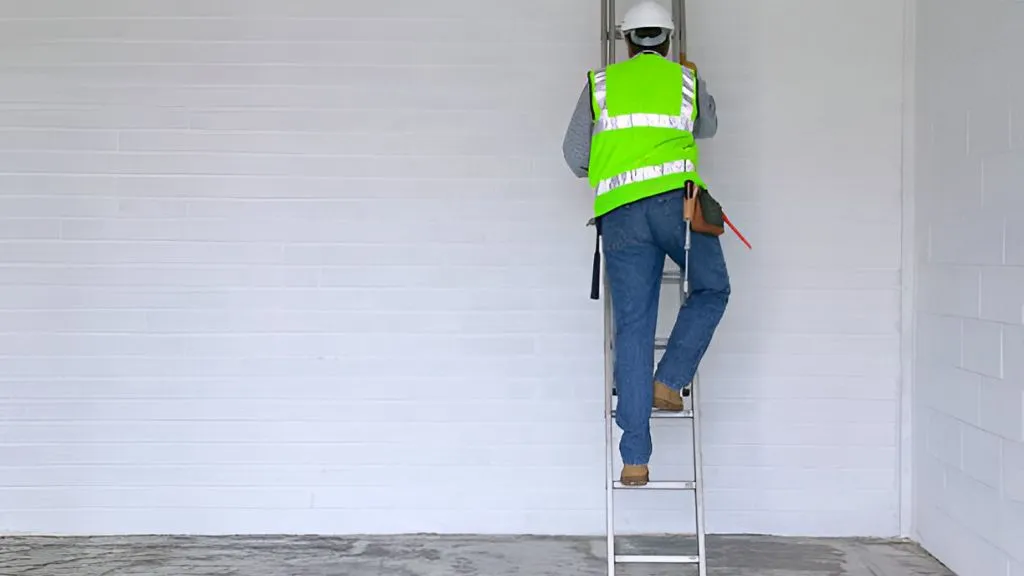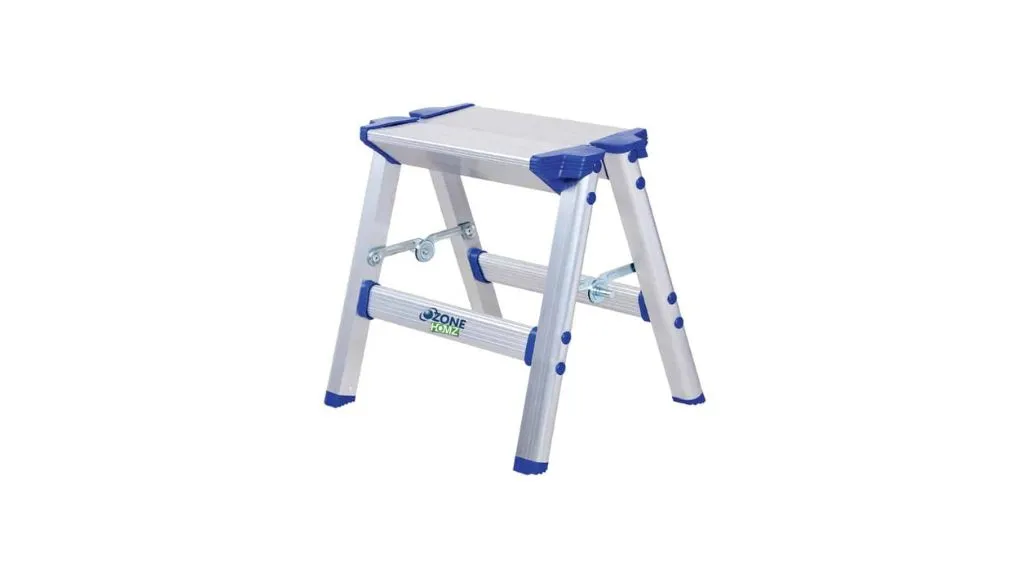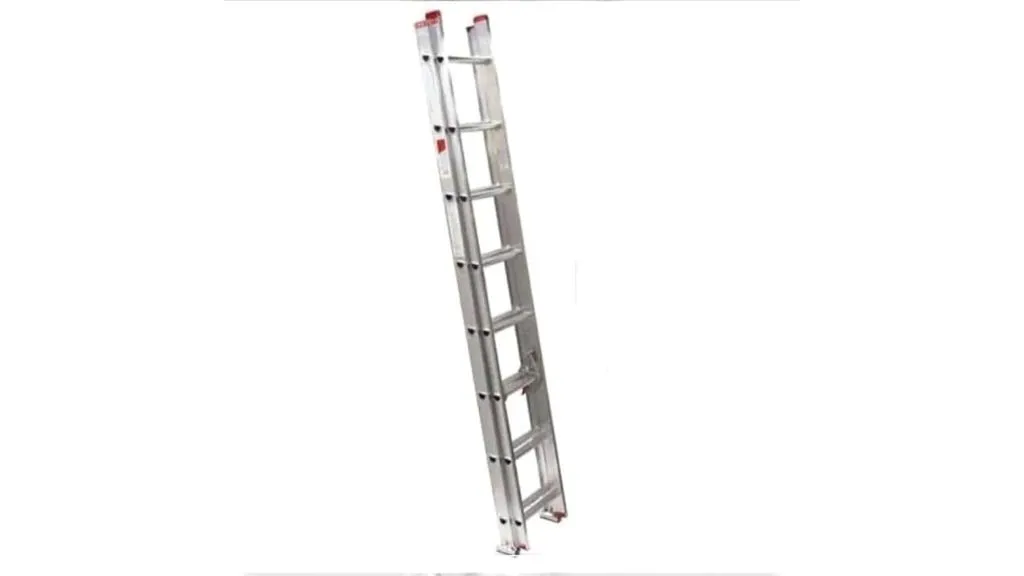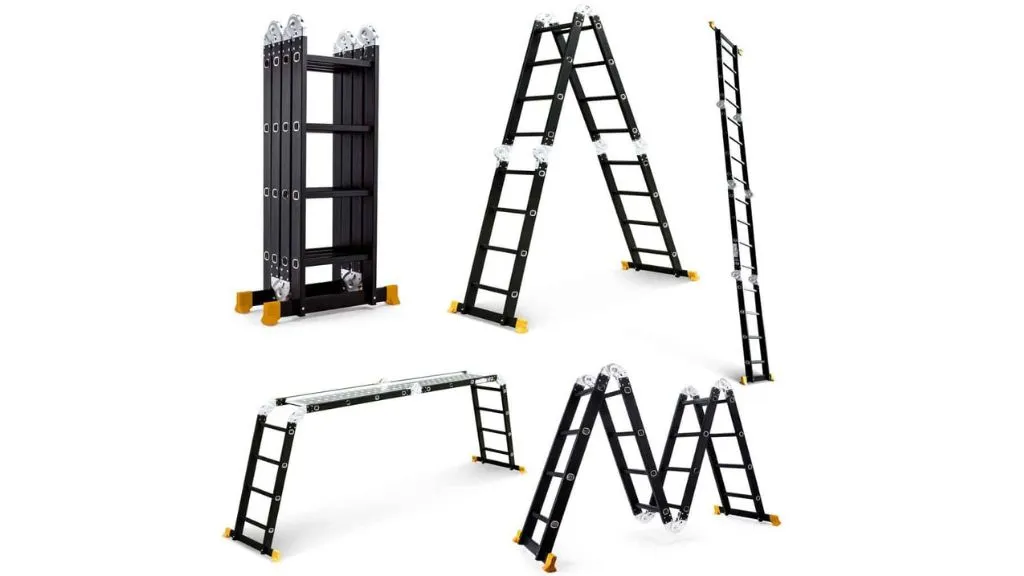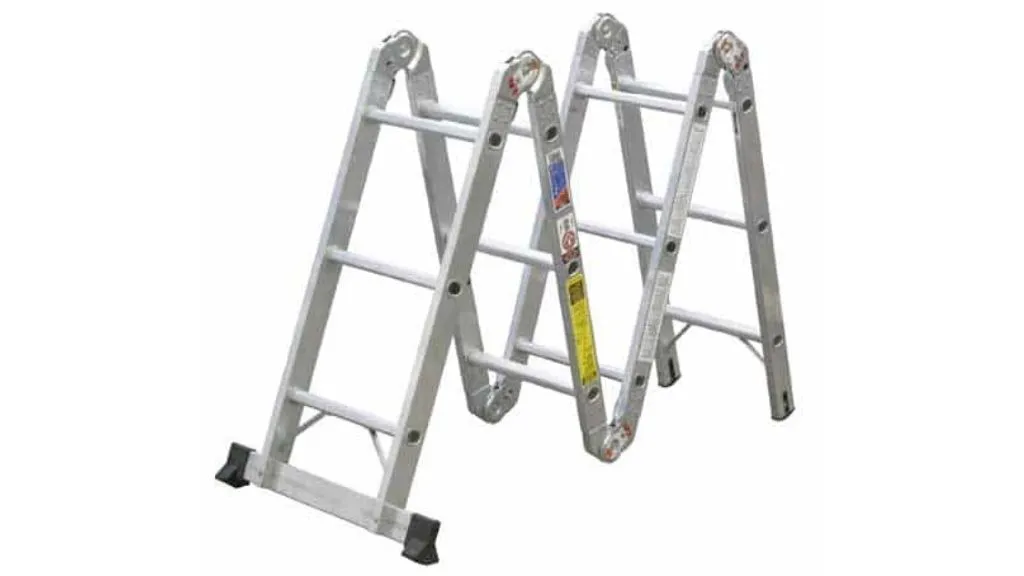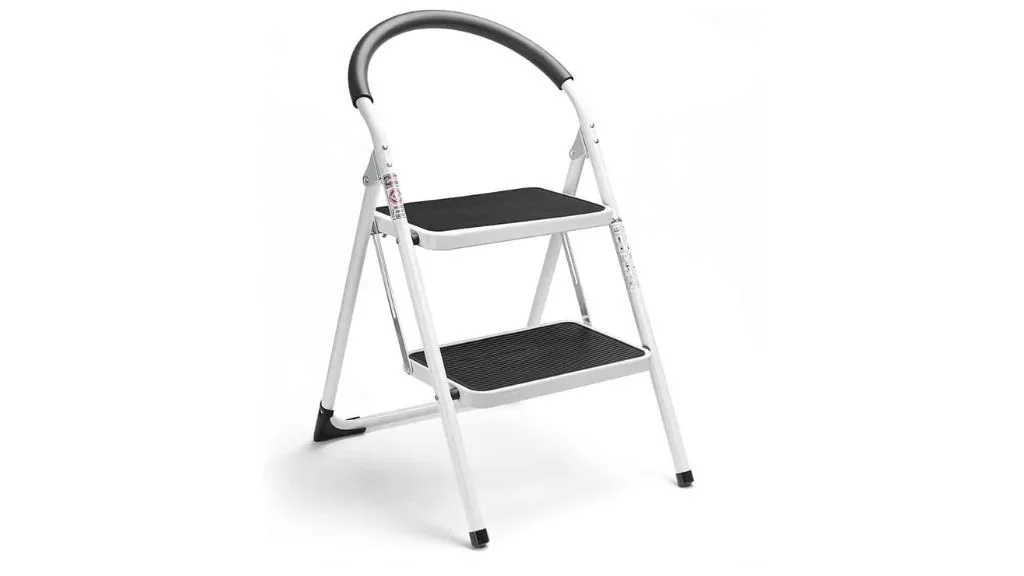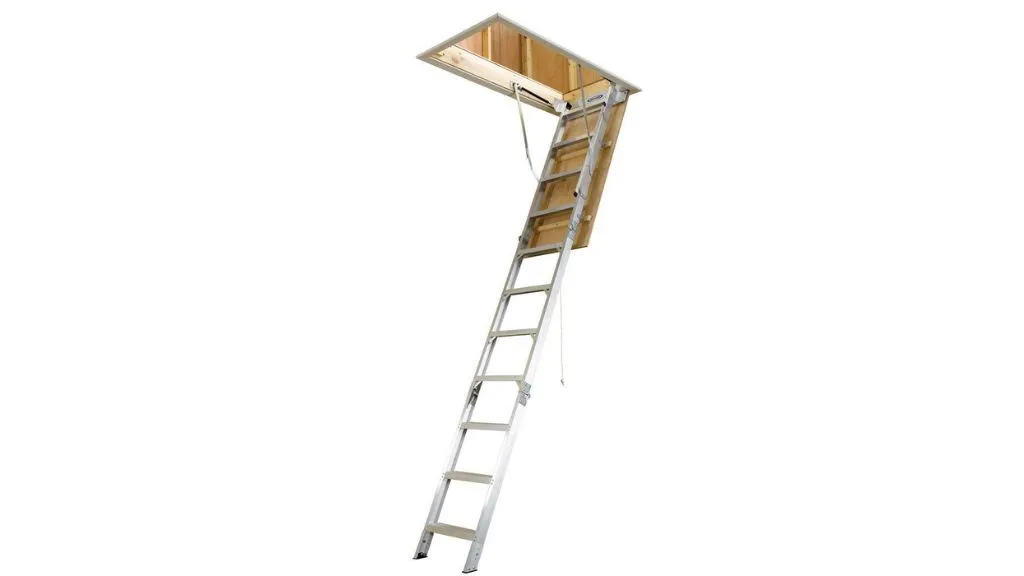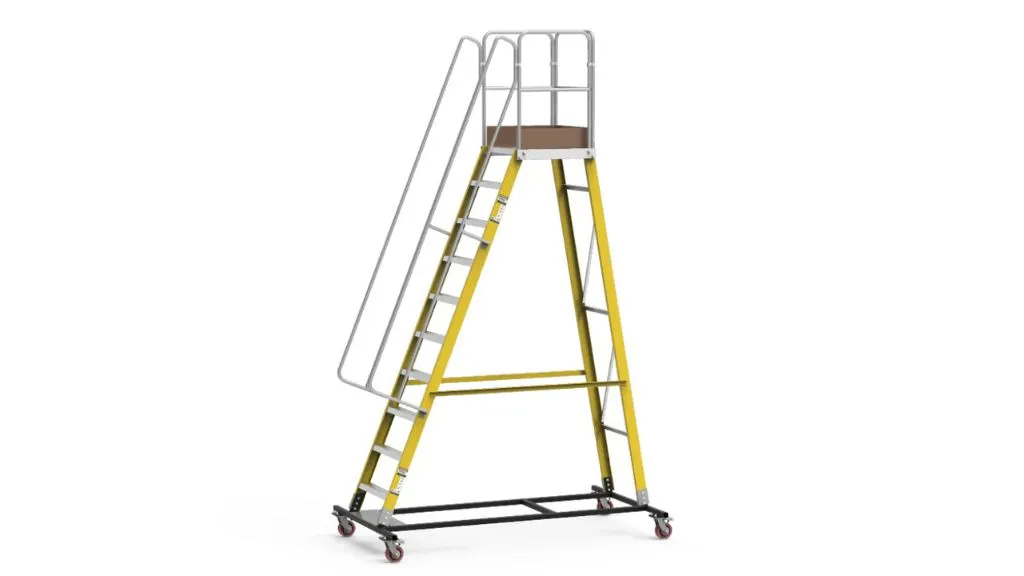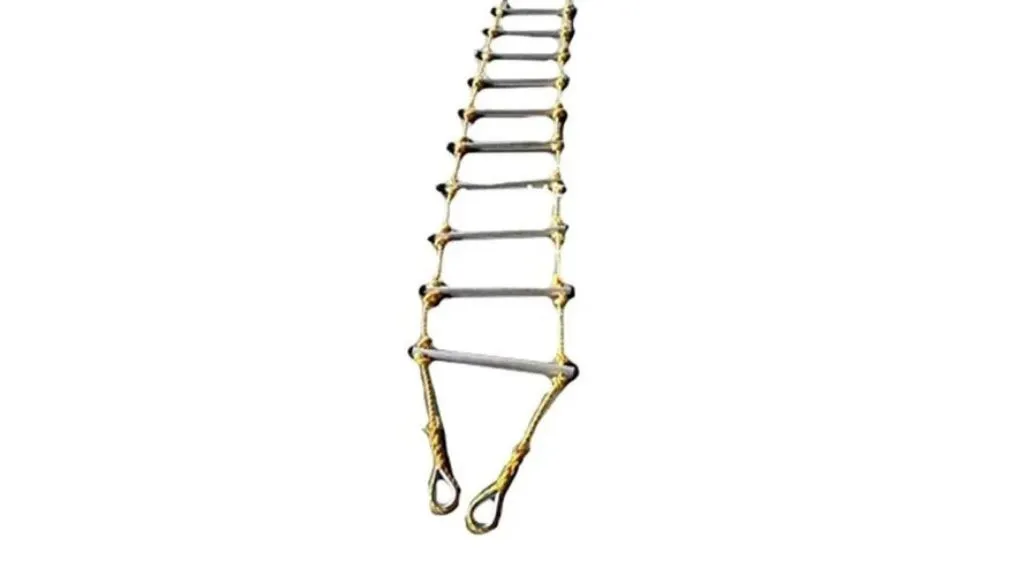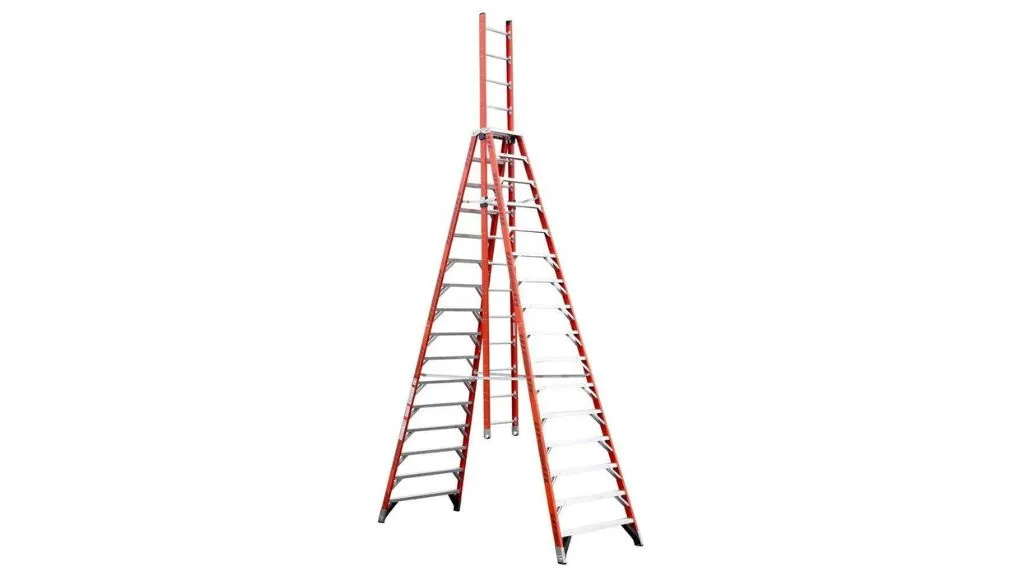Ladders are essential tools for tasks ranging from simple home maintenance to complex industrial projects. However, using the wrong type of ladder can lead to safety hazards, inefficiency, and accidents. With a variety of ladders available, each designed for specific purposes, choosing the right one can feel confusing.
In this article, we will explore the different types of ladders, their uses, and safety considerations, helping you select the most suitable ladder for your needs while ensuring safety and efficiency.
9 Types of Ladders With Images
The most common types of ladders are the rigid type with an A-shape. Let’s look at other common ones:
- Step Ladder
- Extension
- Multipurpose
- Articulated
- Step Stool
- Attic Ladder
- Platform Ladder
- Flexible Ladder
- Trestle Ladder
1. Step Ladder
The step ladder is the most commonly used type of ladder because it’s a multi-purpose ladder. You don’t have to lean it against anything as it is self-supporting. It has two evenly spaced sets of steps with a top cap connecting them. You can climb from either side but if it is a front step ladder, you can only use one side. The other side of the front step ladder is only for support. Spreaders of this ladder lock in and stop it from fastening when you step on it. Moreover, they have anti-skid material at their end to prevent them from slipping when you step on it and when you stand on it for a long time.
2. Extension Ladder
If a step ladder is increased in height, its weight becomes an issue. This is where the extension ladder comes into the picture. The height of this type of ladder can be extended giving it a lot of flexibility and making it ideal for projects like repairing the roof and painting the exterior of your house.
The base of the ladder stays on the ground and the fly is increased to extend its reach. These are not self-supporting like a step-ladder and you have to lean them against a wall or something else to keep them sturdy and stable. The extension ladder comes with a hook or a rope and pulley system that helps the fly slide upward. It also has anti-skid material on the base and a set of hooks on the top to secure its position.
3. Multipurpose Ladder
It is a combination of a step and an extension ladder increasing its versatility manifold. You can either lean it against something sturdy or use its self-supporting function. It can also be used as scaffolding and is perfect for a DIY handyman or even a contractor.
4. Articulated Ladder
The articulated ladder is a portable ladder that can be changed for different projects around your house. It has a series of locking hinges to make it stable and easy to transport. However, the same feature makes its height quite limited. On the other hand, their versatility makes them a good option.
5. Step Stool
Step stools are some of the handiest tools you can have in your kitchen to grab things from the top shelf rather than climbing on the counter. The differentiating factors of the step stool are convenience and cost. Since they are small in size they don’t cost as much and they can be folded up and stored neatly in the kitchen itself. A single-step version of the stool can give you an extra reach of a foot and a two-step version even more.
6. Attic Ladder
The attic ladder has only one function of giving you access to the loft or the attic. They are attached to a door and joined via hinges so that they reach the floor at a certain angle. With attic ladders, you don’t have to haul another ladder throughout the house.
7. Platform Ladder
The platform ladder offers the convenience of a step ladder, the comfort of a place to stand, and the security of a guardrail. This type of ladder is a godsend for people who work on a height for a long period of time as they have a place to stand. It adds more to the comfort aspect with caster wheels, which makes it not easy to move.
8. Flexible Ladder
Unlike other types of ladders, the flexible ladder has very limited use. They are used for recreational activities such as caving, obstacle courses, and more. They are also used in escape routes to exit a dangerous situation. It is also important to note that these ladders are not easy to climb as they need major upper body strength.
9. Trestle Ladder
Trestle Ladders are also known as double front ladders because they are designed to support two people at once. They are portable and self-supporting, so you can use them anywhere with a flat surface. Trestle ladders are usually 20 feet long and accommodate up to two people at once making them perfect for multi-person decoration to installation, painting, volunteer service projects, and more.
Different Types of Material Used to Make Ladder
Just as there are different types of ladders, there are also different materials used to make ladders. Usually, they are made from:
However, choosing the ladder with the aforementioned materials depends on your budget, transportation, and project requirements.
Ladders Made of Metal
Usually, manufacturers use aluminum for making metal ladders, which have their own pros and cons.
Pros
- Lightweight: As aluminum is very light, it keeps the ladders light as well and they become easy to move. If the project you are working on needs frequent repositioning of the ladder, an aluminum one is perfect because it saves time and energy.
- Affordable: Unlike other metals, aluminum is cost-effective and therefore an aluminum ladder will cost less. This can help you buy multiple ladders if you have a construction or painting business.
- Durable: Aluminium has resistance from corrosion and can take harsh weather really well. Thus, it can last for a long time.
Cons
- Conducts electricity: Just like other metals aluminum is a conductor of electricity. While working on an electrical project, these ladders might shock you and could lead to falls and other serious injuries. If your project involves working with electricity frequently, an aluminum ladder might not be the right choice.
- Reflects ambient temperature: An aluminum ladder can get hot in extreme sun and cold in a cold temperature. Working outdoors in summer or winter may not be comfortable with an aluminum ladder.
Ladders Made of Wood
Wooden ladders have been around for centuries but they have their pros and cons.
Pros:
- Non-conductive: They are non-conductors of electricity making them safe for electrical projects.
- Affordable: Wooden ladders are cheap just like aluminum ladders and can save you money to buy multiple ladders.
- Resistant to ambient temperature: Wooden ladders are ideal for outdoor projects in extreme summer or winter as they don’t get too hot or cold to touch in this weather.
Cons:
- Heavyweight: In general, wood is heavier than aluminum and a solid wooden ladder will easily outweigh an aluminum ladder especially if it is very tall. If your project requires frequent moving of the ladder, wooden ones are not ideal.
- Potential durability issues: If left outside for a long period of time in snow, rain or heat, wooden ladders tend to deteriorate. If you plan to store wooden ladders outside, they are not the best option.
Ladders Made of Fibreglass
Fiberglass has been gaining popularity due to its durability. Here are the pros and cons.
Pros:
- Durable: If you are looking for a long-lasting ladder, you should go for a fiberglass ladder because they are strong and don’t crack or splinter.
- Non-conductive: Same as wooden ladders, fiberglass ladders don’t conduct electricity. It is a good option for electrical projects.
- Resistant to ambient temperature: Even if fiberglass ladders are exposed to extreme weather, it doesn’t retain much heat or cold. This ladder works great in outdoor projects.
Cons:
- More expensive: Fibreglass can be expensive and stretch your ladder investment budget.
- Heavier: It is heavier than aluminum and may be strenuous for projects that require constant ladder repositioning.
Ladder Use And Safety Tips
No matter what type of ladder you use, you should follow certain best practices for buying and setting it up.
Tips for choosing the right ladder:
- Choose the proper length: You cannot use the highest rung on most ladders, so ensure that the ladder you choose can be used on the second-highest step.
- Close any gaps: When you are using a ladder to climb up and step off of it, ensure that the ladder extends at least a foot above the upper support point. If there’s a gap between the point you climb off and the top, you run the risk of falling and injuring yourself.
Tips for inspecting a ladder:
- Check before use: Always inspect a ladder before use even if it was used a day or a year prior.
- Check rubber feet: Always check the rubber at the feet of the ladder for cracks/wear and tear to prevent the ladder from slipping.
- Clean ladder steps: To ensure traction on ladder rungs, clean them periodically and always inspect excess oil or grease resulting in a slip hazard.
- Check hardware: Always check the spreaders, rail connections, bolts, and rivets to ensure nothing is broken or missing.
Tips for setting up a ladder:
- Choose an even surface: Ensure that the ladder’s feet are firmly set on the ground to prevent tipping and tilting.
- Choose proper proximity: Place the ladder close to your work area and refrain from leaning or straining to reach for a piece of equipment as you could lose your balance and topple.
- Choose an adequate ratio: Position your ladder at a 75-degree tilt with a 1:4 ratio. For instance, place it 5 feet afar from the support point if it is 20 feet long.
Safety tips for using a ladder:
- Check yourself: If you are feeling sick or dizzy, refrain from climbing the ladder as you may fall and incur serious injuries.
- Climb carefully: Always wear clean and slip-resistant shoes and scale the ladder slowly. While descending, pull yourself close to the ladder and hold the ladder with both hands.
- Move carefully: If you are repositioning the ladder, be sure to climb down completely first. Also, tall extension ladders are top-heavy so get help while moving them.
- Use accessories: Use a utility belt or a bucket to hold your work equipment. Climbing down with equipment in hand is a fall hazard.
To Summarise
When looking for a new ladder, you must consider more than just the type of ladder. You must also consider the type of material the ladder is made of. Regardless of the DIY project you are working on or the business you run, choosing the best ladder as per your requirement can increase your efficiency and productivity.
Types Of Ladders FAQs:
1. What is the safest type of ladder?
Fiberglass ladders can be considered the safest ladders as they are safe to use near power lines and electrical wiring because they are non-conductive. They are flame-resistant, weather-resistant, and durable making them last for years.
2. Do ladders expire?
No, ladders don’t have an expiry date. As long as you clean them regularly, store them properly, and treat them with care, they are going to last an extremely long time.
3. How do I choose a ladder?
You cannot use the highest rung on most ladders, so ensure that the ladder you choose can be used on the second-highest step. When you are using a ladder to climb up and step off of it, ensure that the ladder extends at least a foot above the upper support point. If there’s a gap between the point you climb off and the top, you run the risk of falling and injuring yourself.
